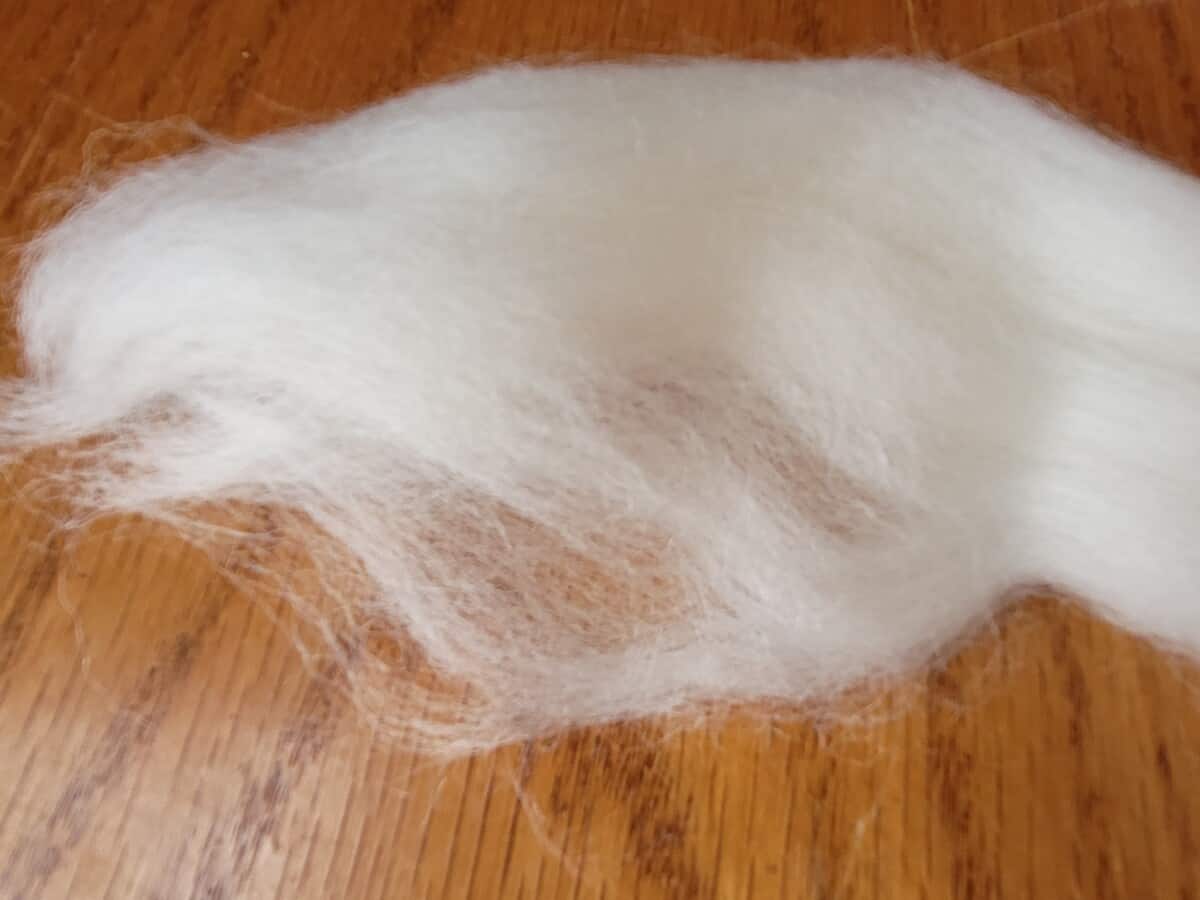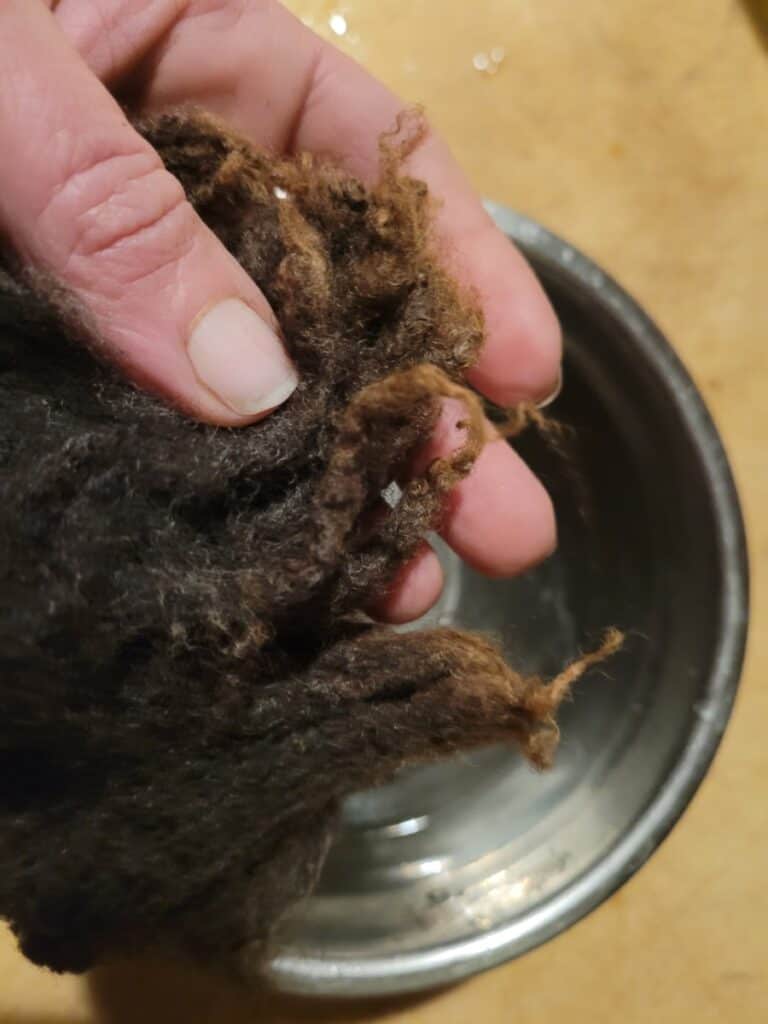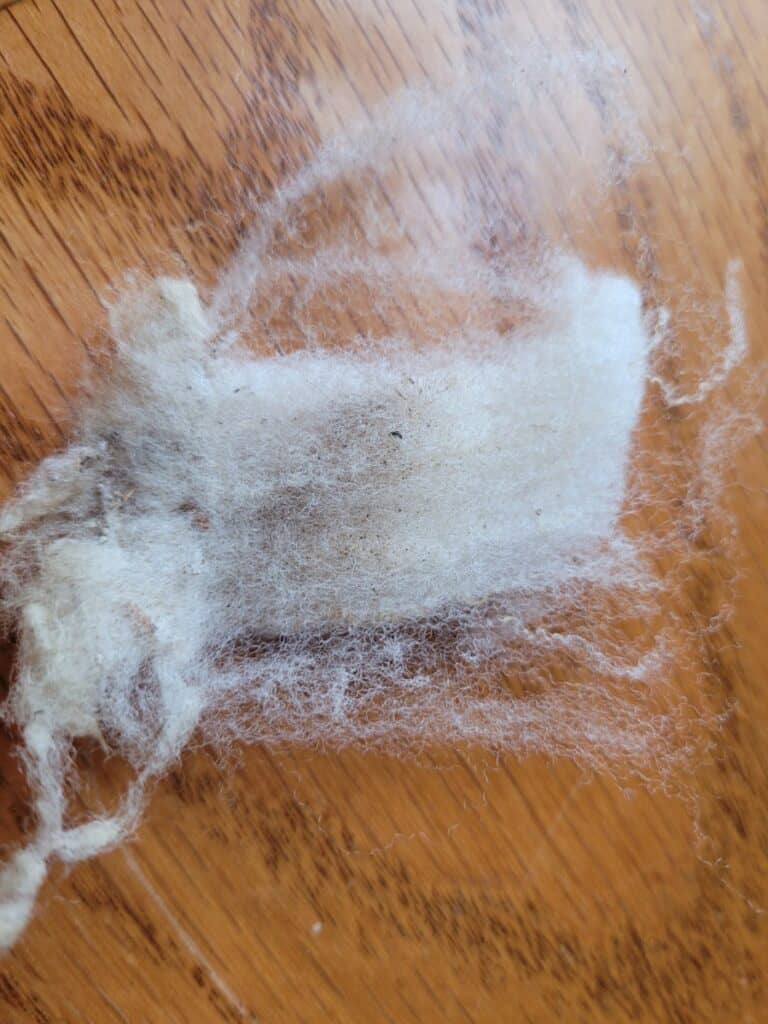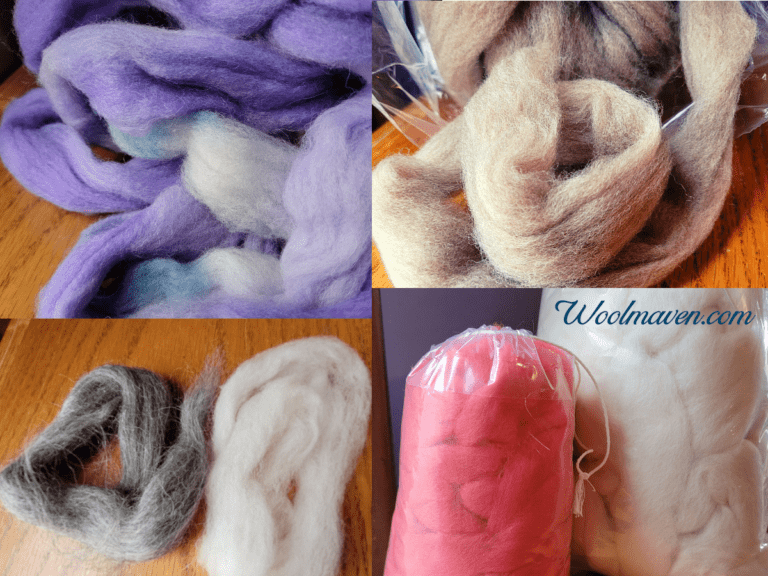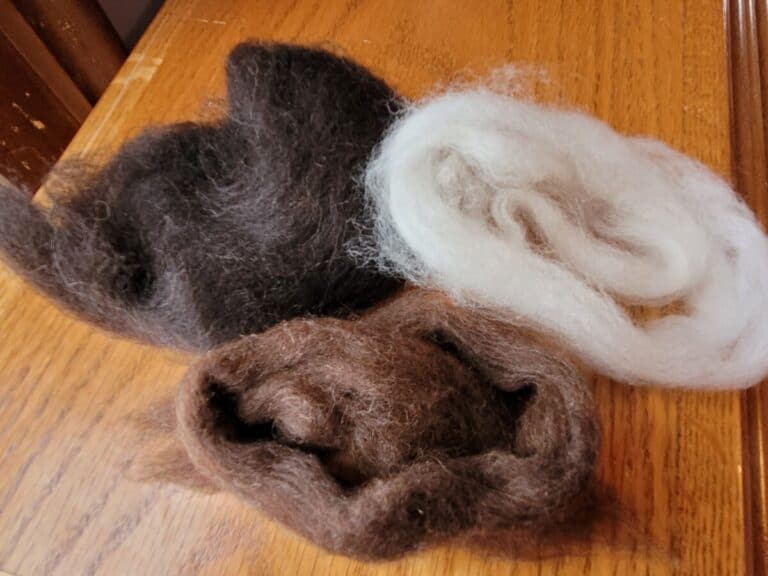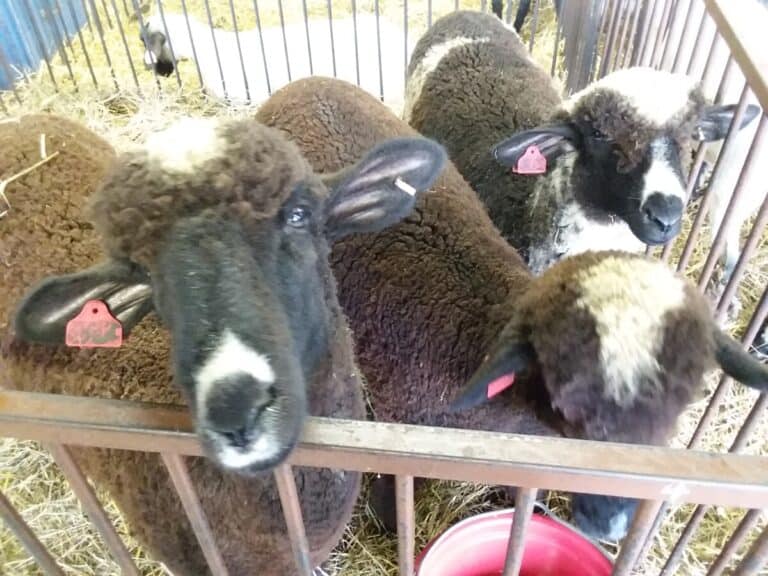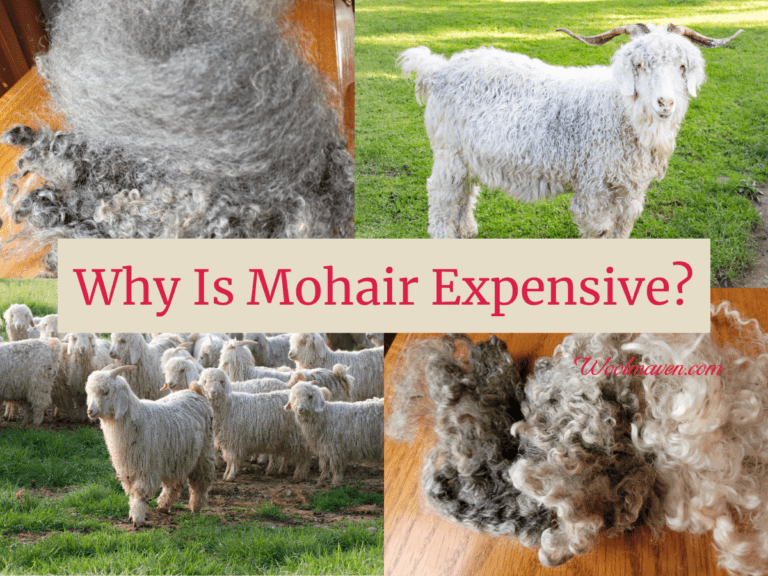Can You Spin Wool Roving?
When you are looking for wool to spin, you come across a lot of choices, different breeds of sheep whose wool is available for spinners, but also different types of wool preparations, like roving.
Can you spin wool roving or is roving made for other types of wool craft, like felting, and spinners are mainly using something else?
You can spin wool roving. Roving is normally used to make woolen style yarn and is popular since roving is ready to spin, right out of the bag.
What Is Roving And Why Use It? goes over the different types of roving and when you would choose each.
You can spin with wool roving
The most common fiber preparation that I see available for spinners is roving.
Roving is washed and carded wool that is put into long, loose “ropes” that are ready to spin.
Since the fibers in roving do not all go the same way, it is more like a tornado of cotton candy in that rope, you will have a yarn with more air trapped inside, which will have a bit more poof and be more insulating.
When using roving, you will also end up with a yarn that is less cleanly defined, as far as seeing the stitches when you knit it up into a hat or mittens.
If stitch definition is important to you, go with a worsted style of wool preparation, like combed top, and spin in the worsted style, instead of using roving for your project.
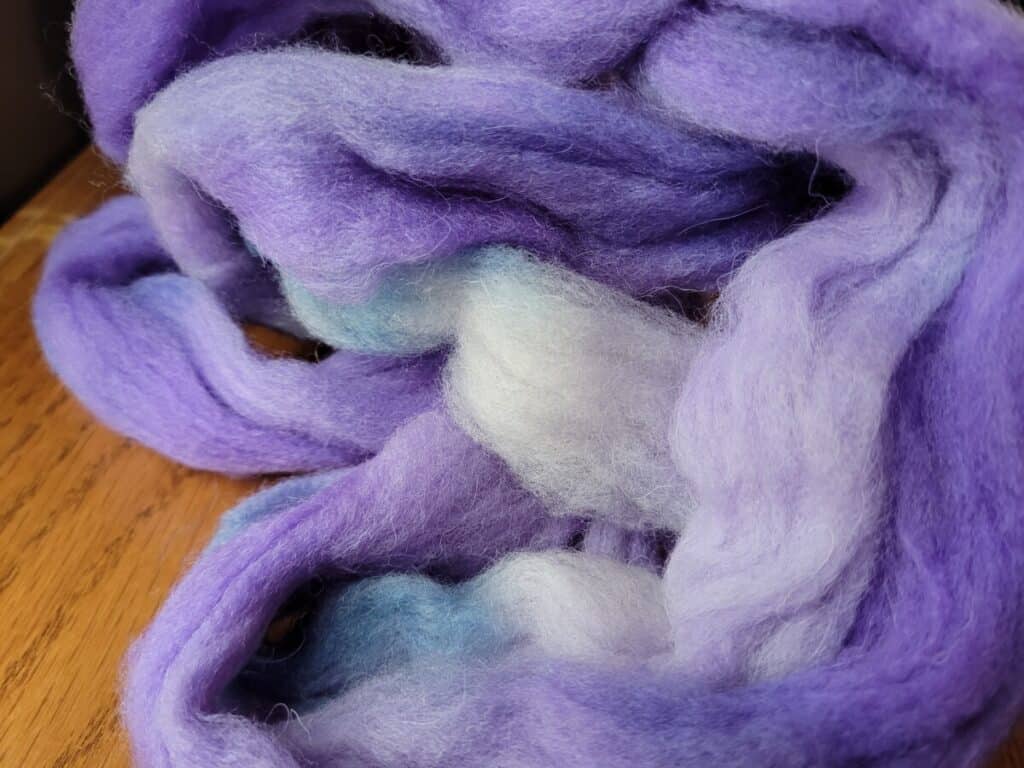
Wool roving is ready to spin
One of the real beauties of roving is that it is ready to spin, as is. No further work is needed on your part!
If you are used to spinning prepared fiber, this is common for you, but if you are like me and up until now have done most of your own fiber preparation at home, buying roving is a game changer!
All you have to do is to draft out the roving to make the thickness of yarn you want and you are good to go with spinning roving!
Advantages of spinning with roving
Using roving equals less wasted fiber
I have noticed that I get much more yarn for my fiber when I use roving. It seems to be just shy of 100% of the roving ends up in the yarn.
I am shocked at how little waste I have scattered around my wheel when I am spinning with roving, compared to when I am spinning with my home prepared wool.
Using home prepared wool, I have a bit of waste to sweep up each time.
I have to admit, I am not an overly picky fiber preparer, so I’m sure part of the noil and tangle storm that surrounds my wheel is due to my lack of fiber preparation skills or lack of precise practice.
Either way, I get more spinning done with roving, by a lot!
Roving is faster to spin
I have noticed that roving is faster to spin than anything I put together myself.
I think this is just the consistency of the fibers and less stopping and starting to pull out VM or join another piece, especially since I normally like to spin from sections of raw fleeces.
Buying roving gives you options of wools to use
When you buy roving, you also have nearly unlimited options of wools to use, without the washing and carding required when you buy a fleece.
This is a huge opportunity for anyone who is interested in expanding their spinning experience, or just someone who enjoys testing out different breeds.
I just purchased some new to me wool roving of breeds that are not even in the country let alone close enough that I could stop by and pick up some wool!
Disadvantages of spinning with roving
Fiber preparation is chosen for you
The main disadvantage of using wool roving is that the fiber preparation is already chosen for you.
This means that if you wanted to use the wool in a different way, you may not be able to easily change it to the preparation that you prefer.
For instance, if you are planning on spinning worsted yarn and you get roving instead of top, you will have a yarn that has more poof than you may have planned on in your finished project.
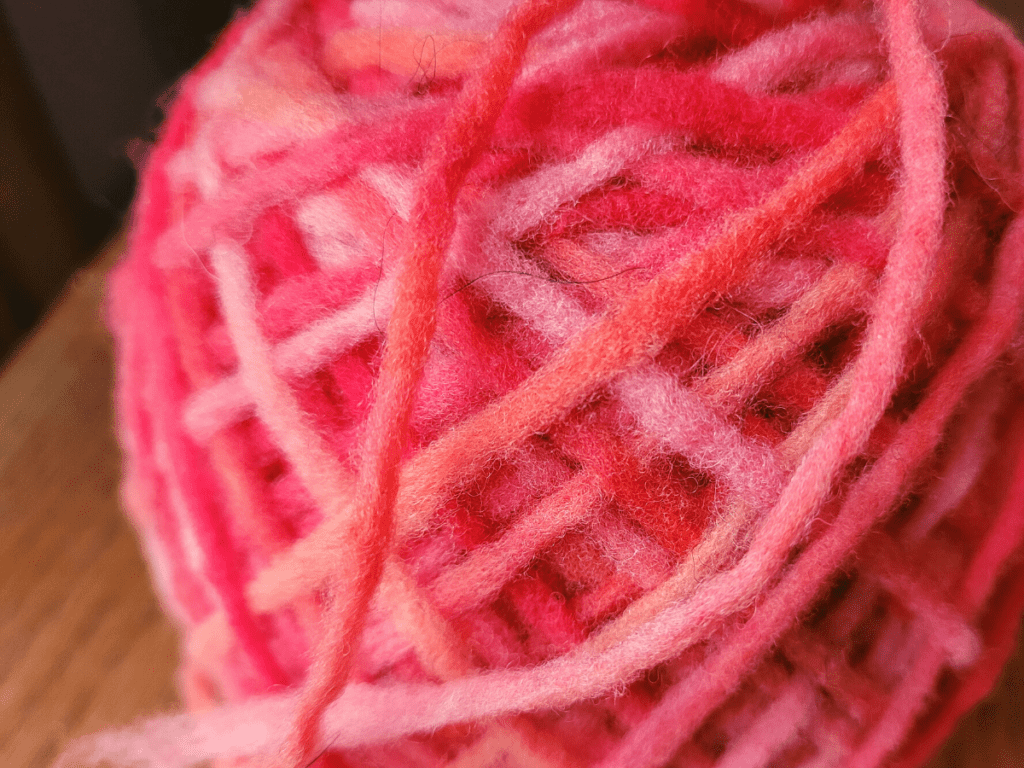
Cost is higher than whole fleeces
Your cost per ounce for spinning fiber is going to be higher when buying roving as compared to buying a whole or partial fleece and doing the fiber preparation yourself.
All ready to spin fiber is not roving
It is important to know that not all ready to spin fiber is roving! Other fiber preparations such as combed top are commonly available, as well.
If you were to choose top, instead of roving, you would get a more defined, clean edged yarn since the fibers in the top are all aligned in parallel to go into the wheel like a river.
Want more details on using combed top for spinning? Click here for my article.
All roving is not 100% wool
It is also interesting to look around and see all of the rovings available that are not 100% wool.
Wool blends are a popular roving, for spinners who want a bit of a different look to their yarn, for instance roving with sparkle from angelina fibers, or wool with silk or angora blended in.
Roving can also be a mix of wools, for instance a mix of breeds or a mix of colored and white fleeces of the same breed of sheep to make a striped roving.
There are also rovings that are not made from sheep wool. Think of angora, mohair and alpaca.
These non wool fibers can be the only fiber in the roving or mixed in with wool to make a blend, for instance 30% angora, 70% merino.
A real crazy development from the spinning and craft world, at least to spinners like me who consider wool to be the main fiber, is the increasingly available option of spinning with plant fiber rovings.
These plant fiber rovings can be 100% plant fibers or a mix of plant fiber and wool, for instance a bamboo merino blend.
Here is The Woolery’s roving selection, if you are interested in seeing a nice variety of choices all in one spot!

